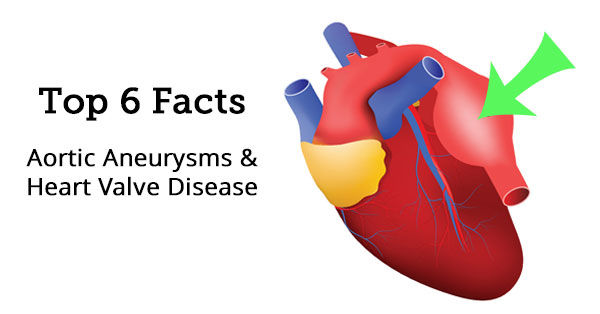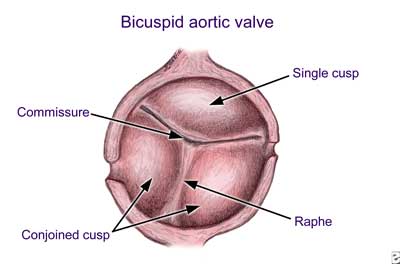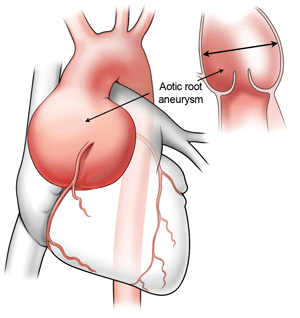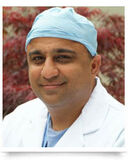Surgeon Q&A: Top 6 Facts About Aortic Aneurysms & Heart Valve Disease
Written By: Adam Pick, Patient Advocate, Author & Website Founder
Page Last Updated: June 3, 2025
Many patients diagnosed with heart valve disease can also struggle with other disorders including atrial fibrillation and coronary artery disease. Another co-morbid disease that can have a sudden and fatal impact on heart valve patients is an aortic aneurysm. You might recall that an aortic aneurysm pre-maturely took the life of John Ritter, one of my favorite comedians best known for his portrayal of Jack Tripper on Three’s Company.

Lately, I’ve received several questions about aortic aneurysms. So, I wanted to create an educational post to help our community learn more about aortic aneurysms and heart disease. For that reason, I reached out to Dr. Eric Weiss, who is the President of Cardiothoracic Surgery and Co-Director of the Heart Valve Program at Mount Sinai Medical Center in Miami Beach, Florida. Dr. Weiss, who is a cardiac surgeon, has successfully treated several members in our community including Patrick Kerrigan and Deirdre Hallam.

During our exchange, I asked Dr. Weiss, “What are the top 5 things patients with heart valve disease should know about aortic aneurysms?” Here is his response — which includes an extra tip for the patients in our community.
#1. A Link Between Bicuspid Aortic Valves & Aortic Aneurysms?
The most common congenital disease of the heart, bicuspid aortic valve disease, is strongly linked with ascending aortic and aortic root aneurysms. The normal aortic valve has 3 leaflets, but in 1-2% of the population (those with a bicuspid aortic valve) there are two leaflets. Not only do these valves tend to break down sooner in life and need to be replaced, but many patients (between 20% to as high as 70% depending on the study) also have an ascending aortic aneurysm. For this reason, patients with bicuspid aortic valve should also be evaluated for aortic aneurysms.

#2. Aortic Aneurysms… A Cause of Heart Valve Disease?
Not only are aortic aneurysms associated with valvular heart disease but in some cases, aneurysms can actually be the cause of the valve dysfunction. Because the aortic root is joined to the aortic valve, stretching of the aortic root can stretch the valve as well and lead to valve leakiness or insufficiency. Therefore, patients with aortic aneurysms should also be checked for valve dysfunction with an echocardiogram.

#3. Aortic Aneurysms Are Not a Ticking Time Bomb
A patient who is diagnosed with an aneurysm is not a ticking time bomb! I know this is a very scary diagnosis, and it certainly should be taken seriously, but the truth is that for most patients these aneurysms have been growing for quite some time – years in fact. So it’s important to relax, stay calm, avoid extreme stress, and make an appointment to see an aortic specialist.
#4. Preventative Measures for Aortic Aneurysms
For those diagnosed with aneurysms that do not yet meet the indications for surgery, the best preventative measures you can take are to maintain good blood pressure control and avoid activities that cause significant straining, like extreme lifting. However, exercise is generally a good thing because being healthy and active lowers your blood pressure over time.
#5. The Symptoms of Aortic Aneurysms Can Be
Symptoms are often vague or not present at all but can range from slight chest discomfort, shortness of breath or general uneasiness to severe tearing chest or back pain in the case of aortic emergencies. Patients often are diagnosed with aneurysms when they are being studied for another problem and the aneurysm is discovered incidentally.
#6. Find an Aortic Aneurysm & Heart Valve Specialist
In closing, Dr. Weiss offered some great advice to our patient community. He shared, “The most important piece of advice I can give for any patient with aortic aneurysms and valvuar heart disease is make sure to seek consultation from a specialist who is trained in treating both aneurysms and heart valve problems. There are many nuances to aortic surgery and each patient requires a specialized individually tailored treatment plan.”
I hope that helped you learn more about aortic aneurysms and heart valve disease. I know it helped me! On behalf of our community, I wanted to thank Dr. Weiss for sharing his clinical experience and research with our community.
- See the Interactive Profile of Dr. Weiss
- Surgeon Q&A: Do Valve Patients Commonly Need an Aortic Aneurysm Fix?
- Learn about Ritter’s Rules for watching Aortic Aneurysms
Keep on tickin!
Adam
|
Teresa Allen-Pennington says on September 29th, 2017 at 12:42 pm |
|
What if you have five valves? |
 |
|
Sheri Burchett Driver says on October 4th, 2017 at 1:18 pm |
|
Enjoyed reading this as my surgery is scheduled for next week, it is exactly my condition. |
 |













